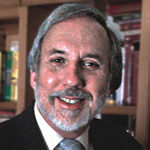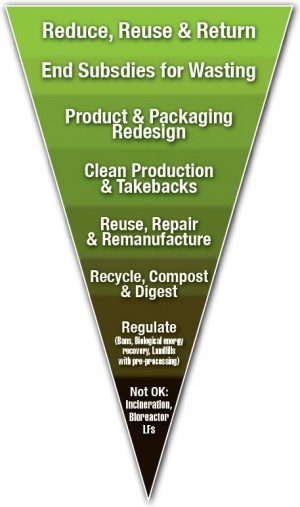
Gary Liss
BioCycle July 2013, Vol. 54, No. 7, p. 61
Thousands of businesses all over the world are leading the way to Zero Waste. They are finding that they can save money, increase efficiency, reduce liability and greenhouse gases, and contribute to their green marketing by going to Zero Waste. To ensure they are doing the right thing, businesses have been asking a number of organizations to validate their Zero Waste claims or certify them. Two years ago, no one was doing that — now at least 4 groups are validating Zero Waste claims or certifying them in the U.S.
The U.S. Zero Waste Business Council (USZWBC; www.uszwbc.com) is currently the only group doing third party certification according to the definition of Zero Waste and standards of the Zero Waste International Alliance (ZWIA; www.zwia.org). No more than 10 percent of materials can be landfilled or incinerated to qualify as meeting this standard. ZWIA was established in 2002 to develop worldwide standards to guide development of Zero Waste practices by businesses and communities. It adopted a recognition program in January 2012; in March 2013, ZWIA adopted the Zero Waste Hierarchy of Highest and Best Use.
The ZWIA Zero Waste definition is the only one that is peer reviewed and accepted by worldwide environmental, recycling and Zero Waste leaders. According to ZWIA:
ZWIA has developed national affiliates to implement its Zero Waste Business Recognition Program in Australia, Brazil, Canada, and the U.S. In the U.S., the national affiliate is the GrassRoots Recycling Network, which is working with the USZWBC. The USZWBC issued its first Zero Waste certifications to three Whole Foods Market stores in San Diego County, California in March 2013. Its audit found all three stores are successfully reducing, reusing, recycling and composting. Each received a bronze level Zero Waste certificate for better than 90 percent diversion from the landfill, incineration and the environment based on the ZWIA standards.
The USZWBC is also developing a more comprehensive certification system for businesses that will be like the LEED program of the U.S. Green Building Council with points awarded for a wide variety of program attributes. Different levels of certification, for different specialties, and across sectors, e.g., retail, hospitality, health care, property management and manufacturing, are included.
UL Environment (ULE), a business unit of Underwriters Laboratories (UL; www.ul.com), adopted its Environmental Claim Validation Procedure 2799 for Zero Waste to Landfill and Landfill Diversion Rate calculations in 2012. ULE 2799 “provides a framework for the evaluation and verification of singular facilities that send little to no waste to landfills and have found ways to beneficially reuse those materials… this procedure addresses the impact of all materials entering and leaving the facility under review except for finished goods and personnel.” ULE 2799 does not include “wastewater and its associated contents” although “liquid materials (e.g., oils, lubricants, paints, etc.) are generally included. The procedure also includes “materials that are required by law to be landfilled (e.g., asbestos and lead paint).” ULE capped the combustion of solid waste at 10 percent but allows individual businesses to justify more than that.
NSF-International Strategic Registrations Ltd. (NSF-ISR) made its first verification of ‘Landfill-Free” claims in March 2012. West Liberty Foods, an Iowa-based foodservice company, earned “landfill-free” status from NSF-ISR for its Tremonton, Utah processing facility, notes an article in Food Engineering. NSF-ISR confirmed that West Liberty Foods landfilled no more than one percent of the total waste from its Tremonton facility — nearly 3.5 million pounds of annual waste were diverted. NSF-ISR’s standards allow for combustion of solid waste to count on an unlimited basis.
UL has convened a Standards Technical Panel to collaboratively develop an ANSI (American National Standards Institute) standard for Zero Waste to Landfill based on ULE 2799. UL expects to release a draft standard this fall for general review and comment. ASTM E60 is a Sustainability initiative of ASTM (American Society of Testing & Materials). They are also researching the issues involved with defining Zero Waste and Landfill Free.
GreenCircle Certified, LLC (www.greencirclecertified.com) also validates and certifies for Zero Waste. They also offer to certify a percentage of waste a company or manufacturing facility diverts from landfill after performing a material flow and mass flow analysis. GreenCircle allows energy recovery systems to count towards the goal of zero waste without a cap, but says only “nonrecyclable” or “not economically recoverable” materials can be counted when performing their analysis.
Businesses now have several options for getting their Zero Waste programs validated or certified. The greatest benefit will come to those pursuing this sooner than later. The early leaders will be reported on in trade journals and the general media while this is still a significant distinction.
Gary Liss is a Zero Waste consultant based in Loomis, California. He is President of the U.S. Zero Waste Business Council and Chair of the ZWIA Zero Waste Certification Committee.










